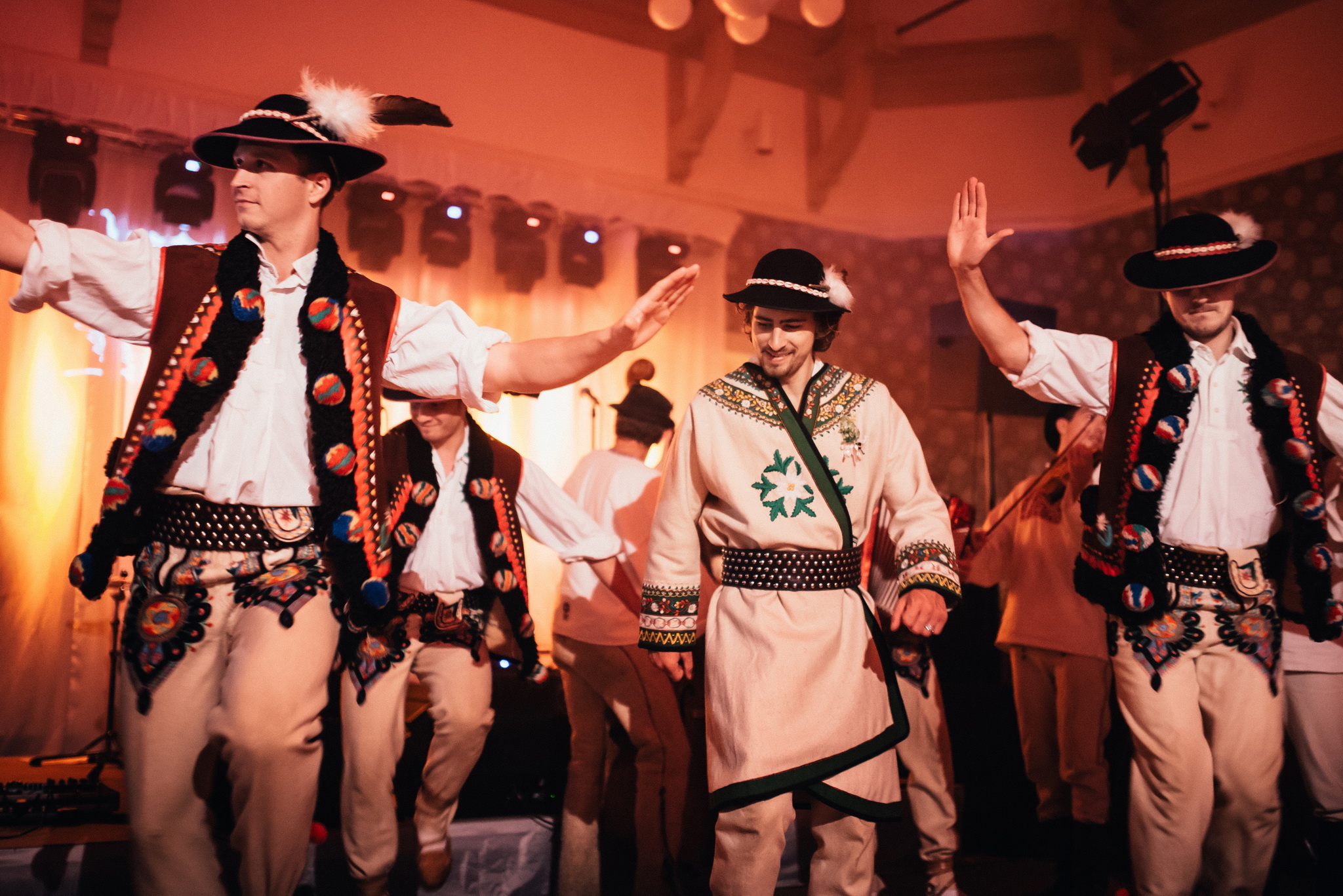“Čepčenie” is an ancient ceremonial ritual that until first half of the last century was a part of every young girl’s wedding in the villages.
This ritual consists of taking a floral headdress off the bride’s head and follows with placing a traditional bonnet (čepiec) on the bride’s head. “Čepiec” was only worn by married women. This traditional ritual usually took place in a room or a chamber in an intimate atmosphere of candle light. This was generally done by older married women simultaneously with singing and advice for the bride for the married life. A head wear called “parta”, which the bride wore walking to the altar, was like a magical head cover that was fulfilling not only an aesthetic but also a protective function. People, but mainly women, believed different superstitions. Red ribbons on “parta” were to repel bad ghosts and witches that wanted to hex the bride with their spells. White colour and green rosemary or boxwood leaves symbolised the purity and innocence of the bride. Each village put an emphasis in the look of “parta” to something different. That is why Slovakia has more than 350 different types of “parta”. The bride, that went to the altar pregnant, was not able to wear “parta” but only a head scarf. Today “čepčenie” is getting more and more popular, even at the modern weddings.
In my experience it is our “čepčenie” in a stylish presentation that is regarded as one of the most beautiful elements of the wedding. Different regions have different folk costumes and songs, but in our repertoire you can find East Slovak’s, Podpoľanie’s, Orava’s or Goral’s “čepčenie”. Traditionally, there should be another member of the wedding party, in the past called elder (“starejší”), who is nowadays represented by a presenter or a good organiser of the course of wedding. I work with several people that are dedicated to this traditional occupation and they can be a part of the whole wedding, depending on the client’s requirements.
I would like to thank husband and wife Sagans, Peterajs, Melicherčíks, Palkovičs, Klimkos, Kohárys and many others for permission to use the photos from “čepčenie” in our production.




















